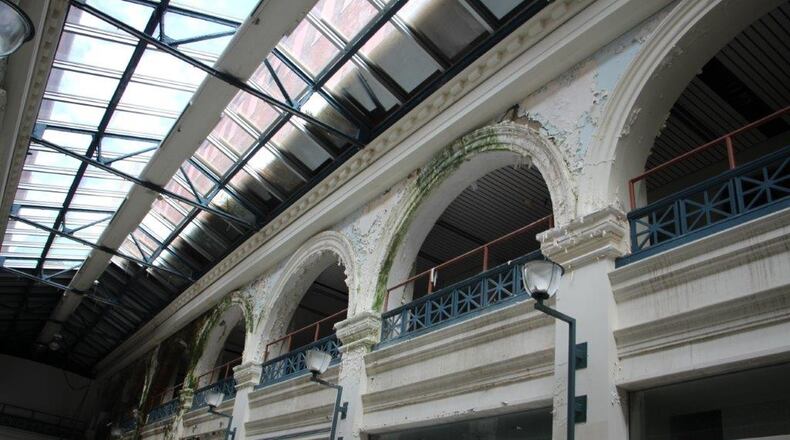STAYING WITH THE STORY
The Dayton Daily News has covered potential redevelopment of the Dayton Arcade for years, including the latest attempt to save the downtown landmark. See past coverage at MyDaytonDailyNews.com
The developers of the Dayton Arcade have asked the state for millions of dollars in historic preservation tax credits, which they say is another big segment of financing for the initial stages of the revitalization project.
After securing $20 million in low-income housing tax incentives and asking the local land bank to remove the Arcade’s back taxes, the developers say obtaining state historic preservation and federal new market tax incentives are needed to help carry the project across the finish line.
But, as always, the state tax credit program is highly competitive, and the Arcade is competing with some ambitious projects from across the region and state.
The new owners of the Centre City building along Main Street and the YWCA Dayton have also applied for millions of dollars in historic preservation tax credits.
“We knew going into this it would take all of these different elements to bring this thing together,” said Dave Williams, vice president of urban development with Miller-Valentine Group, one of the development partners.
The development team planning to revitalize the Dayton Arcade have asked for $5 million in state historic tax credits to help transform parts of the complex into housing geared toward artists and other uses.
The team includes Miller-Valentine Group and Cross Street Partners, which is a firm based in Baltimore.
The deadline to apply for historic credits was Sept. 30. The state will announce awards by Dec. 31.
The developers say they also want to pursue federal new markets tax credits for the Arcade.
“These are all key elements for the project,” Williams said.
The new markets program seeks to increase investment in low-income communities by financially supporting high-impact projects. These projects are supposed to create new jobs and offer new services and products through new businesses development, such as community space, fresh foods, cultural uses, business incubation services, education and job training, officials said.
“The Dayton Arcade will provide many of these community benefits through a combination of mission-oriented tenants and high-quality public spaces,” Williams said
Both tax credit programs provide financial tools that will assist with transforming the Arcade complex into a catalytic activity center in the heart of downtown, Williams said.
The development group hopes to know by the end of the year if it has the financing sources in place to begin rehabilitating the Arcade, he said.
Ideally, construction would start in summer of next year, with the first phases wrapping up 12 to 18 months later, but that timeline might be overly optimistic, Williams said.
The Arcade will compete for state historic tax credits with 43 other projects from across Ohio that have asked for $74.4 million in allocations. The state has about $25 million in incentives to dole out in this funding round.
Projects seeking state support include the Dollar Federal Bank Building in Hamilton (which has requested a $250,000 award) and the Litt Brothers building in Xenia ($183,714 requested).
The Dayton YWCA has asked for nearly $1.4 million in credits to help with its rehab project, while the new owners of the Centre City Building at 40 S. Main St. have requested a $5 million allocation.
Centre City Partners LP propose spending more than $40 million to turn the vacant office tower into 164 housing units, offering 206 bedrooms, said Paul Ruby, a member with First Developers LLC in Virginia, which created the limited partnership.
The credits are vital to the adaptive-reuse project, which hopefully will earn high scores because of the uniqueness of the Centre City’s architectural and aesthetic elements, he said.
The building’s design was characteristic of that time and was the one of the tallest reinforced concrete buildings in the world when it opened.
However, the state in past years awarded historic tax credits multiple times to developers who had similar ideas for the Centre City building. The credits were returned to the state when those plans did not proceed.
About the Author

